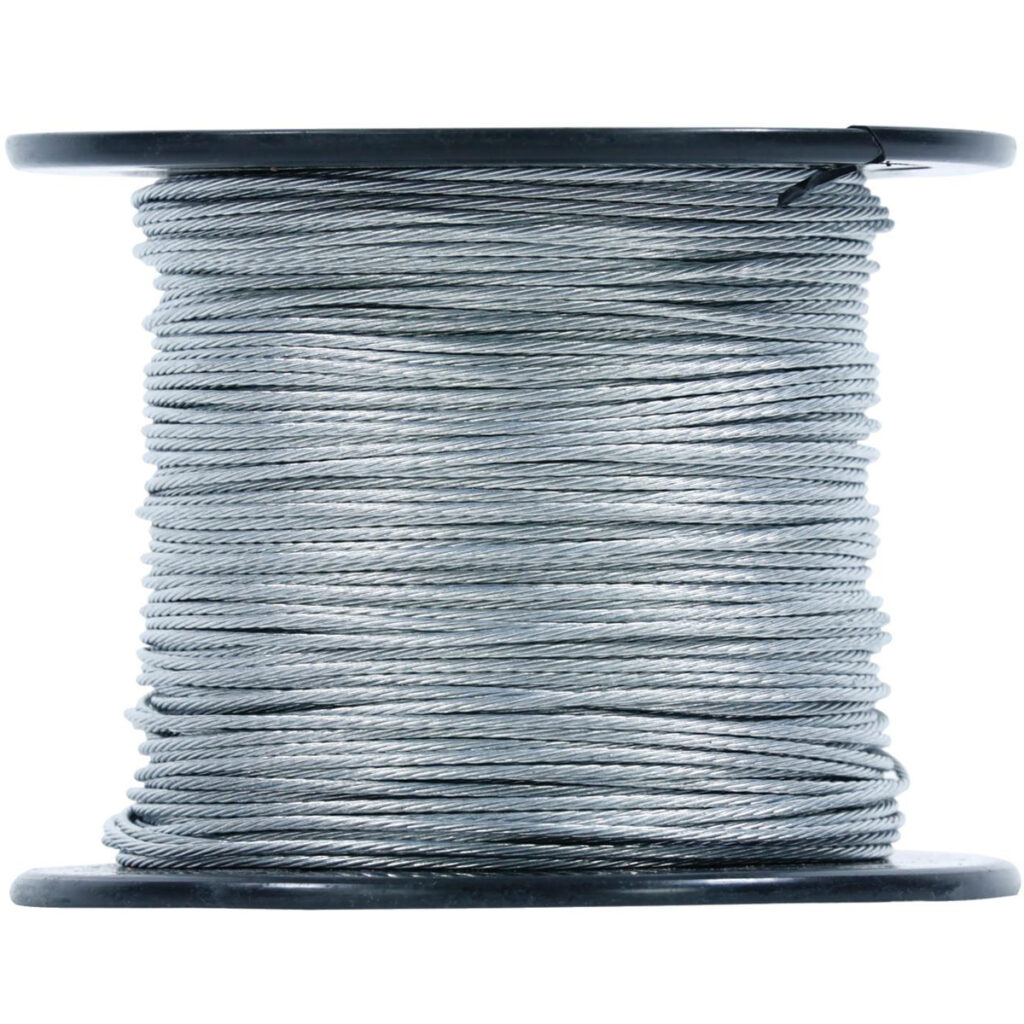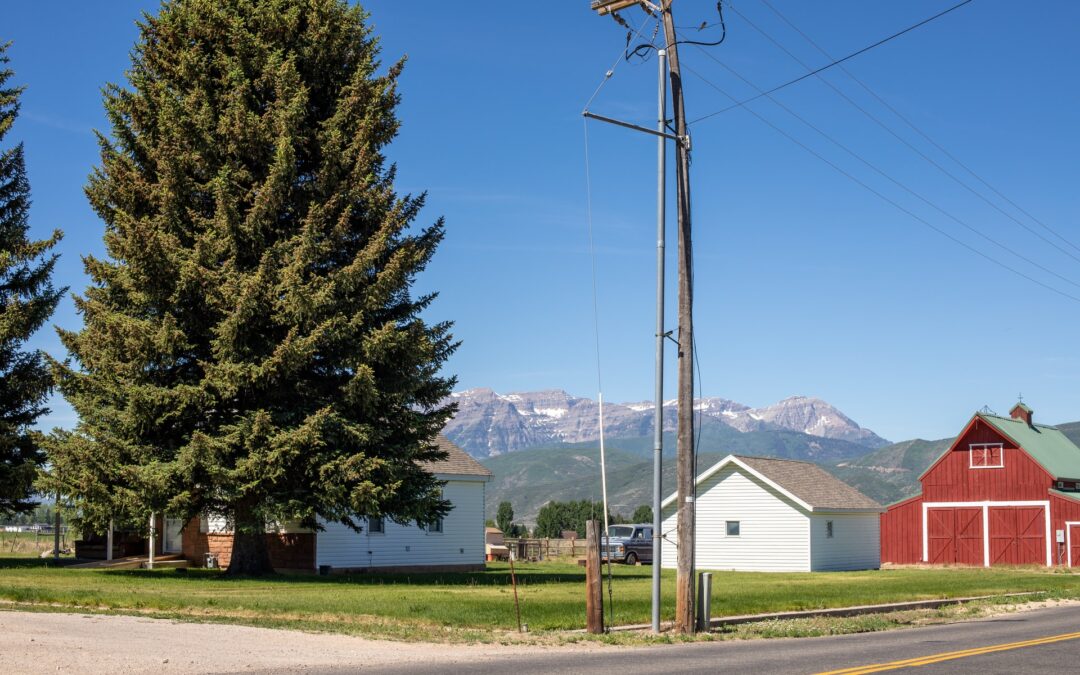Guy wire, also known as stay wire or messenger wire, is used in the construction of overhead lines. For performance, the guy wire is assembled with a guy thimble, pole bracket, stay rod, and a turnbuckle stay set. These execution-related accessories are intended to stabilize the pole and the remaining conductors for optimal performance.
TTF stay wire conductors are manufactured in a manner that withstands the continuous environmental stress that can occur during installation and other activities. A few wires are included with the galvanized ones to ensure proper performance.
There is no room for a joint, splice, or weld in the circular space. This increases the guy wire’s or stay wire’s longevity. This, in turn, improves its performance.
To ensure the highest possible quality, an open heart procedure, also known as an electric furnace or basic oxygen, is used. There is also a zinc-coated one. Additionally, the consistent quality set by standards has optimized the product’s performance to set the pace. You can obtain the work prescription and details using the ASTM-provided idea.
Table of content
What is Guy Wire?

A guy-wire, guy rope, or guy-line is a tensioned cable that is designed and manufactured to help a free-standing structure maintain its stability.
Guy wires are frequently used in radio masts, ship masts, fire service extension structures, wind turbines, and utility poles. They are also used to raise and support church tents. A guyed mast is a long, thin vertical mast that is supported by guy wires.
The guy wire’s galvanized finish protects it from the elements. Guy wire is designed to work with a variety of fittings and components, making it ideal for a variety of applications.
The structures that support the guy antennas are frequently made of latticework and are referred to as “towers.” The guy is attached to the structure at one end and anchored to the bottom some distance away from the mast or tower base at the other. This combination ensures the fabric’s maximum stability.
Hardware for Guy Wire
For a guy wire to function properly, it must be fitted with a variety of fittings. These components comprise a complete guy wire kit and include the following:
Big grip dead ends, also referred to as preforms, are frequently used for top tensioning antenna, communications, and transmission towers.
End sleeves, also known as ice clips, are required when using large grip dead ends. They have a proclivity for preventing unraveling.
Drop forged wire rope clips are frequently used to clamp the wire rope’s unfinished business after forming an eye.
Shackles are most frequently used to join wire rope, chain, and slings. Anchor shackles of the bolt type are frequently used in projects involving guy wire.
Thimbles are used to protect the wire rope’s attention or loop.
Turnbuckles are used to assemble or disassemble guy anchors.
What is the Purpose of a Guy Wire?
Guy wires are attached to the tower’s highest point on one side and to a secure location near the bottom on the other.
Guy wires are simple to install: simply connect three of them to the mast where it connects to the antenna. They will twist on, or you can attach them into the mounting bolts. Drill holes in your mast and secure the wires with bolts for an extra-secure fit, but this is not always necessary.
Attach the opposite side of the guy wires to points on your roof or bottom, and gradually tighten the cables until all three are secure and the antenna cannot move.
Ideally, the three wires should be mounted 120 degrees apart, but this will not be possible with enormous antennas, so simply space them as far apart as possible without obstructing the antenna.
A typical guy wire is designed to transfer a portion of the tower’s load to multiple points on the bottom. Even if you’re using a very narrow tower, a guyed installation creates the illusion of a wider tower due to the triangle formed by the wire’s attachment to the bottom.
Applications of Guy Wires
Guy wires of the highest quality are extremely versatile and have a wide range of applications. They are typically used on tall structures and buildings. The following are some of the most common applications for guy wires:
Guy wire for utility poles
Utility poles are buried in the ground and are strong enough to face the elements on their own. Guy wires, on the other hand, are only required on certain poles to support unbalanced lateral loads.
To protect the public from accidents that could electrify the cable, utility guy cables typically have a ceramic strain insulator at their highest points.
The lower end of the cable, where it enters the bottom, is typically encased in a length of yellow plastic reflector to make it more visible and avoid colliding with people or vehicles.
In urban areas where the area beneath the pole is constrained, a variation known as a sidewalk guy is frequently used. The guy line on this type extends diagonally from the pole’s highest point to a horizontal spar brace extending out from the pole’s center, and then vertically to the bottom.
Thus, the rock bottom portion of the guy is vertical and does not obstruct headroom, allowing for the passage of a sidewalk between the pole and, thus, the guy.
Guy wires or watercraft
The guys that support a sailboat mast are referred to as “standing rigging,” and they are made of chrome steel wire rope in modern water vessels. Guys are typically rigged to the bow and stern as a single unit. The port side guy wires are attached to the “chain plates,” while the starboard side guy wires are attached to the hull.
Multiple guys with spreaders are typically installed to keep the mast straight (“in column”). On a sailboat, temporary guys are also used, and a fore-guy is a term that refers to a line (rope) attached to and intended to regulate the free end of a spar. The spinnaker pole is the spar that is typically controlled by one or more guys on a modern sloop-rigged sailboat with an asymmetric spinnaker.
Wire for antenna guying
The antennas’ electromagnetic fields complicate the design of guy wires that support mast antennas.
Conductive metal guy-wires with lengths nearly quarter wavelength multiples of the transmitted frequency have the potential to distort the antenna’s radiation framework.
This also applies to guy wires attached to nearby masts or metal structures.
To avoid this, each guy wire is divided into multiple segments by strain insulators, each segment being non-resonant at the transmitted wavelength.
Typically, cylindrical or egg-shaped porcelain insulators (affectionately referred to as “egg insulators”) are used. Non-conductive guys made of Kevlar fiber or extruded fiberglass rod are frequently used because they prevent radiation from being discharged onto the antenna.
Kevlar fiber has comparable strength and low stretch properties to steel. Due to the extreme vulnerability of Kevlar to ultraviolet degradation, it is encased in a UV-resistant plastic sheath.
Other applications for guy wires
Apart from the three mentioned above, guy wires have a plethora of other applications. They include the following:
- Applicable to cranes
- Attached to telecommunications cables
- Wind turbines
- Ladders and a variety of other items
How to Install Guy Wires?
There is no definitive guideline for determining whether or not you should like guy wires. Generally, it is assumed that any tower over 20 feet should have them.
As a tower grows in height, it becomes increasingly heavy and susceptible to wind sway. Guy wires, when installed properly, will assist in securing it.
When installing light masts, the guy wires used to secure the units are approximately 19 feet tall (and above).
A guy wire is installed in the pole’s center at 19 feet to prevent it from swinging. Heavy-duty light towers 33 feet (and above) in height with a secure, bolted base may only have one set of guy wires at the pole’s highest point.
However, it is critical to consider that best practices call for two sets of guy wires to be installed in the middle and at the highest points of standard-height towers. These sections of the pole have the lowest level of stability due to their distance from the unit’s foundational base.
It is recommended to install guy wires in 1/3 increments on tall light masts or in locations prone to inclement weather. The final (third) wire should be installed at the mast’s highest point in this configuration. A guy wire should be connected at each section of telescoping light masts that require additional stability.
Guy wires are required by law.
Guy wires are required in some instances. With this type of installation, you should always consult your local town planning office.
This is frequently the case if you’re erecting something more than ten feet above your roof line. Local laws governing the installation of guy wires vary by city.
Consult with local engineers in your area. You will be informed whether this is required or not.
Choose a Chinese Manufacturer of Guy Wire
Are you looking for the best guy wire for sale? The best course of action is to seek out reputable guy wire manufacturers in China. This way, you’ll be able to purchase high-quality guy wires.
Additionally, by purchasing directly from the manufacturer, you can be certain of receiving affordable guy wires. To take advantage of these and numerous other advantages, simply contact TTF Power. We are a reputable guy wire manufacturer in China.
Frequently asked questions(FAQs)
What is a guy wire?
A guy-wire, guy rope, or guy-line is a tensioned cable that is designed and manufactured to help a free-standing structure maintain its stability.
Guy wires are frequently used to support radio masts, ship masts, fire service extension structures, wind turbines, and utility poles. They are also used to support church raises and tents.
What purpose do guy wires serve?
Guy wires are typically used on tall structures and buildings. The following are some of the more common applications:
Wire for utility pole guying
Guy wire or vessels for water
Wire for antenna guying
Other applications for guy wires
Which hardware is used in conjunction with guy wire?
For a guy wire to function properly, it must be fitted with a variety of fittings.
Big Grip Dead Ends
End sleeves
Drop forged wire rope
Shackles
Turnbuckles
Why is guy wire so prevalent?
Guy wire is used in a wide variety of situations and is available in a variety of sizes and strengths ranging from utility to extra high strength.
Guy wire coated with zinc is extremely resistant to corrosion, extending its life and preventing damage to your structure.


